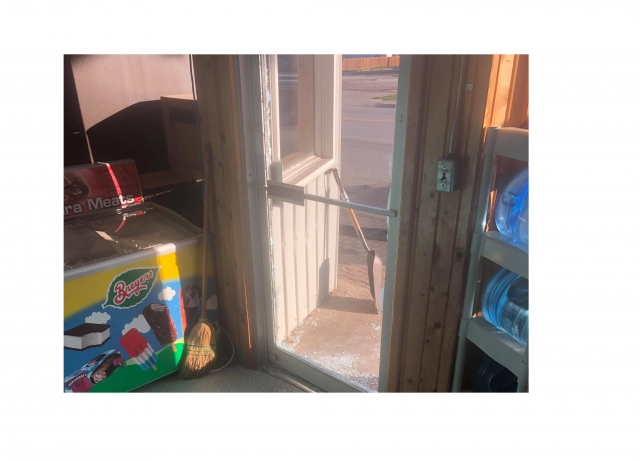 NewsNow
NewsNow
An increasing amount of Manitobans are filing for bankruptcy.
A news release from MNP LTD shows the number of Manitoba residents who filed for insolvency was up 15.5 percent in the second quarter of 2019 compared with the first quarter. The number is also an increase of 4.1 percent compared with the same time last year.
A survey conducted by Ipsos on behalf on MNP found that 27 percent of Canadian homeowners with a home equity line of credit, or a HELOC, have used the funds to pay off debts, and 36 percent used the money to do things that they wouldn’t normally be able to do, things like home repairs and renovations.
The survey also said that 14 percent of people used their HELOC funds to buy things like cars, and 9 percent invested in real estate.
Of the people who used their HELOCs for something else, only 14 percent regret it. The same percentage of people say they’re worried about paying off their HELOC’s.
- Details
- Contributed by Josh Sigurdson
200,000 Bell Canada customers will be cut from a rural internet expansion program after a federal regulator lowered wholesale broadband prices that major telecom companies can charge to smaller internet providers.
Bell said Monday that the rates set by the CRTC will cost more than $100 million, with the bulk of the sum going to cover the retroactively lower rates.
As a response, the company said it will cut its rural internet program designed to provide wireless internet access to homes that are hard to reach by conventional fibre or cable access by 20 percent.
Rogers Communications said that it’s disappointed by the CTRC’s decision and it will be reviewing future investments in rural and remote communities in light of the $140-million charge expected by the decision.
The CRTC requires that large telecom companies sell access to their infrastructure to smaller internet providers as a way to lower prices and improve competition.
After review, the CRTC set final wholesale rates last week that are up to 77 percent lower than rates set in 2016.
Major telecom companies have threatened that infrastructure investments could be affected by lower broadband access rates.
Bell latest decision will result in the rural expansion program being cut back to one million houses, down from 1.2 million across Manitoba, Ontario, Quebec, and Atlantic Canada
- Details
- Contributed by Josh Sigurdson
A middle-school addition in Neepawa that was supposed to open next month in time for school will not. The two-story school that will be attached to the Neepawa Collegiate and adds on to their current middle-school wing inside the high school, will include 10 new classrooms, a gym, music room, a conference room and much more.
The current middle-school wing features eight classrooms. That means there will now be 18 when it opens up. It will welcome kids from grade 5 to 8. Right now, it's just for grades 6 to 8.
"It won't be ready in September. Last May, we saw that it wouldn't be ready so we just pushed the date back," said Jason Young, Superintendent/CEO for the Beautiful Plains School Division. "Our hope is to get into the new building sometime in October."
The new addition has not only people in Neepawa excited but Young as well.
"It's going to be fantastic. We've heard great things from people outside of the school as well. We're looking forward to it, it's looking like the school now," said Young. "We needed more room and we're going to get that."
The Neepawa Collegiate/Middle-School has seen a significant bump in students over the years. Five years ago, there were approximately 760 students in the two buildings. Now there is more than 1200.
"This facility is going to really help us," he continued.
Young also feels more people will be coming to the school in the coming years.
To assist in childcare, there is also a 74-spot daycare being built on-site.
"That's much needed in our community as well. Our community has grown and there's a shortage in daycare space," Young concluded. "It's an exciting time for a lot of people in Neepawa."
- Details
- Contributed by Darnell Duff
A Thompson RCMP officer has been found not guilty of manslaughter in a 2015 on-duty shooting that killed a drunk driver and injured a passenger.
But 37-year-old Constable Abram Letkeman was found guilty of criminal negligence causing bodily harm.
A trial in Thompson Monday heard how Letkeman fired a dozen shots into a Jeep, killing 39-year-old Steven Campbell. Campbell was hit at least nine and his girlfriend was injured in the shooting.
Crown prosecutors argued that Letkeman made a series of wrong and negligent choices resulting in the shooting. The defence lawyer said the officer thought his life was in danger because the Jeep was moving towards him.
The trial heard that Letkeman saw the Jeep being driven erratically immediately after bars closed and after a failed traffic stop, he pursued the vehicle but never relayed that information to his supervisors.
Letkeman testified that his goal was to end the chase by bumping the back of the Jeep with his police car. A use of force expert stated that the move was against protocol and training, and was extremely risky.
The Jeep ended up on an ATV trail, where it lost control and stopped, then was T-boned by Letkeman’s vehicle.
The officer stated that he didn’t wait for backup and walked in front of the Jeep to perform a high-risk takedown. Then, he said, the Jeep started moving towards him which forced him to fire.
A toxicology report on Campbell’s body showed his blood-alcohol level was almost 2 ½ times the legal limit to drive. It also showed a trace amount of cocaine.
The Crown argued during closing arguments in June that Letkeman stood in front of the Jeep and fired so it wouldn’t be able to drive away, not due to fear for his life.
The Prosecutor said none of Letkeman’s acts on the night of the shooting were reasonable.
- Details
- Contributed by Josh Sigurdson
Last week, the Manitoba First Nations Police were contacted by the Saskatchewan RCMP who advised them that a 30-year-old male victim had reported that he had been sexually assaulted by 2 males.
The incident happened at a party at a residence on the Waywayseecappo First Nation on July 6th, 2019.
The victim provided a statement to police regarding the circumstances of the Sexual Assault.
Two male suspects took part in the Sexual Assault on July 6th and one suspect 28-year-old Raymond Longclaws was located by MFNPS and arrested and charged. He is being held in custody and is expected to appear in court today.
The second suspect remains at large and police are actively searching for the suspect.
MFNPS are asking for the public’s assistance for anyone that may have information on the events that happened the night of July 6th. If you have any information, contact the Waywayseecappo Detachment at 204-859-5071.
- Details
- Contributed by Josh Sigurdson
Erin Knight from Gilbert Plains has been appointed to the Prime Minister’s youth council.
Knight is an advisor to the Prime Minister and Government of Canada. They attend 2 or 3 in-person meetings every year. Officials and communities come and discuss certain topics with them. The youth council then suggests directions for policies and how it’ll affect youth across the country.
It was quite the process for Knight to beat out over 1000 other applicants and get appointed.
“It starts with a written application where you go through your resume, and you go through some of the community endeavours that you’ve undertaken. From there, they select people to go onto a video interview, they post questions and you answer them in a virtual environment. From there, they review your video answers and ask you to submit your resume. From there, they then shortlist about 25 candidates. Then those 25 are reviewed by the Prime Minister and he chooses as many as he wants but he chose 8 this time.”
She recently had her first meeting in Iqaluit, Nunavut.
“It was incredible! It was the first time I’d been to the north. It’s just a really different environment. So for that first kind of experience being in the youth council, I think being so removed from my kind of normal everyday life was a way to plunge deep into it.”
In Iqaluit, the youth council talked about food insecurity, indigenous language revitalization, indigenous tourism, economies in the north, infrastructure, and oceans in the north. Justin Trudeau met up with their group, had lunch and spent half the day with them. They had breakout sessions and a round table discussion about policy issues with him.

Knight wants to emphasize her role on the council extends from her passion for rural development and rural Canada.
“When I speak to officials and when I speak to the PM, I’m speaking from that perspective. So, I’m always emphasizing consultations with rural people and I’m always emphasizing how it’s going to impact people in rural Canada, especially my home community and people in the Parkland. You’re always at the forefront of my mind when I’m talking about these issues.”
Knight thinks the consultation process she goes through on the youth council and public policymaking process are things she’s going to be able to take into her future.
- Details
- Contributed by Isaac Wihak
Friday night before 9 in Ebb and Flow the powwow was cut short from a lightning strike hitting the centre pole.

5 ambulances, as well as fire and rescue and police were on the scene.
25 people were assessed on site and 13 were sent to the Ste. Rose General Hospital.
All were treated and released by Saturday morning.
- Details
- Contributed by Isaac Wihak
The Canadian Crop Hail Association states that more than 10,000 hail damage claims have been received this year.
The association adds that at the mid-point of the year 6,900 claims have been filed by Saskatchewan farmers- the most in the Prairies.
The five-year average for Alberta and Saskatchewan is up slightly, while the average for Manitoba is down for the hail season.
Only about half the received claims have been processed.
Overall, claims are on pace with 2018, where more than 11,000 claims were filed by the end of the year.
- Details
- Contributed by Josh Sigurdson
Showdra's Meats in Dauphin is in the midst of a cleanup.
Between 5:00 a.m. and 7:00 a.m. Friday, August 16, someone broke the glass on the front door and entered the building.
They ended up taking about $50 from the till and that's all.
15 years ago, someone broke in and took about $500 worth of jerky and other meats.
- Details
- Contributed by Darnell Duff
The town of Esterhazy, SK, which is about 80 kilometres southwest of Russell, experienced an earthquake last night.
The 4.1 magnitude quake shook the town for a couple of minutes around 8:30.
The epicentre was 5 kilometres from a nearby potash mine, causing miners to head to refuge stations as a precaution.
A few minutes after the quake, power went out for two and a half hours.
SaskPower has said the earthquake affected the transmission system in the area but they aren't sure how badly.
There weren't any reported injuries.
This isn't the first time there's been an earthquake in the area, in fact, 17 have hit since 1981 with the last one being in 2016.
- Details
- Contributed by Isaac Wihak
The government of Manitoba is hoping to build a lab in Dauphin to detect a harmful disease in deer that experts believe is working its way to Manitoba.
Manitoba Sustainable Development posted a request for proposals last month to build the Dauphin Big Game Health Laboratory.
A spokesperson said that there already is a lab in Dauphin as part of its disease surveillance program and now Chronic Wasting Disease is the main concern.
Chronic Wasting Disease or CWD is a fatal neurological disease similar to mad cow that has no cure.
Manitoba has extended the surveillance area for CWD and is requiring hunters to submit the heads of their kills for analysis.
CWD is loosely known as “zombie deer” disease because late-stage symptoms of the disease in elk, moose, caribou, and deer include excessive drooling, salivating and urinating, and an inability to hold their heads up.
The disease has been found in some provinces and U.S states but not in Manitoba.
There have been cases documented in Saskatchewan, with the latest scare, being confirmed last month at a white-tailed deer farm in Alberta.
Research suggests that the diseased proteins from animals infected with CWD can be harmful to humans if consumed.
Once it's detected in a deer, the general approach is to cull the entire local population in hopes of stopping the spread.
Hunters must turn in samples in Manitoba, Saskatchewan, Alberta, and Yukon, and it's voluntary in all other provinces.
The surveillance area in Manitoba includes Game Hunting Areas 5, 6, 6A, 11, 12, 13, 13A, 18 and 18B (west of PR 366), 18A, 18C, part of 22 (west of PTH 83), 23, and 23A.
For more information on the submission of biological samples, go to the government of Manitoba website.
- Details
- Contributed by Josh Sigurdson


















